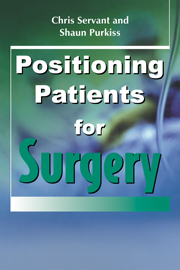Arm (humerus and elbow)
Published online by Cambridge University Press: 06 December 2010
Summary
Prone position
(Figure 39)
Attach an arm table or a padded gutter (e.g. Carter-Bain) to the operating table at the level of the upper chest
Transfer the patient on to the operating table in the prone position. This requires rolling the patient from the supine position on to the arms of three or more assistants, who then lift the patient on to the operating table
In the prone position the patient must have their chest and pelvis supported in order to allow free movement of the abdomen. This may be achieved by lifting the patient on to a special mattress (e.g. the Montreal mattress; see Figure 105)
Rest the head on a suitable support (e.g. a pillow or a head ring)
Abduct the contralateral arm 90° and flex the elbow 90° so that the arm lies supported on a suitable arm board
Abduct the affected arm 90° and place it on the arm table or gutter so that the elbow flexes over the end of the table or gutter, allowing the forearm to hang
If using an arm table rather than a gutter, consider placing some padding (e.g. a rolled gel pad) under the tourniquet or under the shoulder of the side to be operated on. Alternatively, support the arm on a folded drape after draping.
- Type
- Chapter
- Information
- Positioning Patients for Surgery , pp. 49 - 54Publisher: Cambridge University PressPrint publication year: 2009



